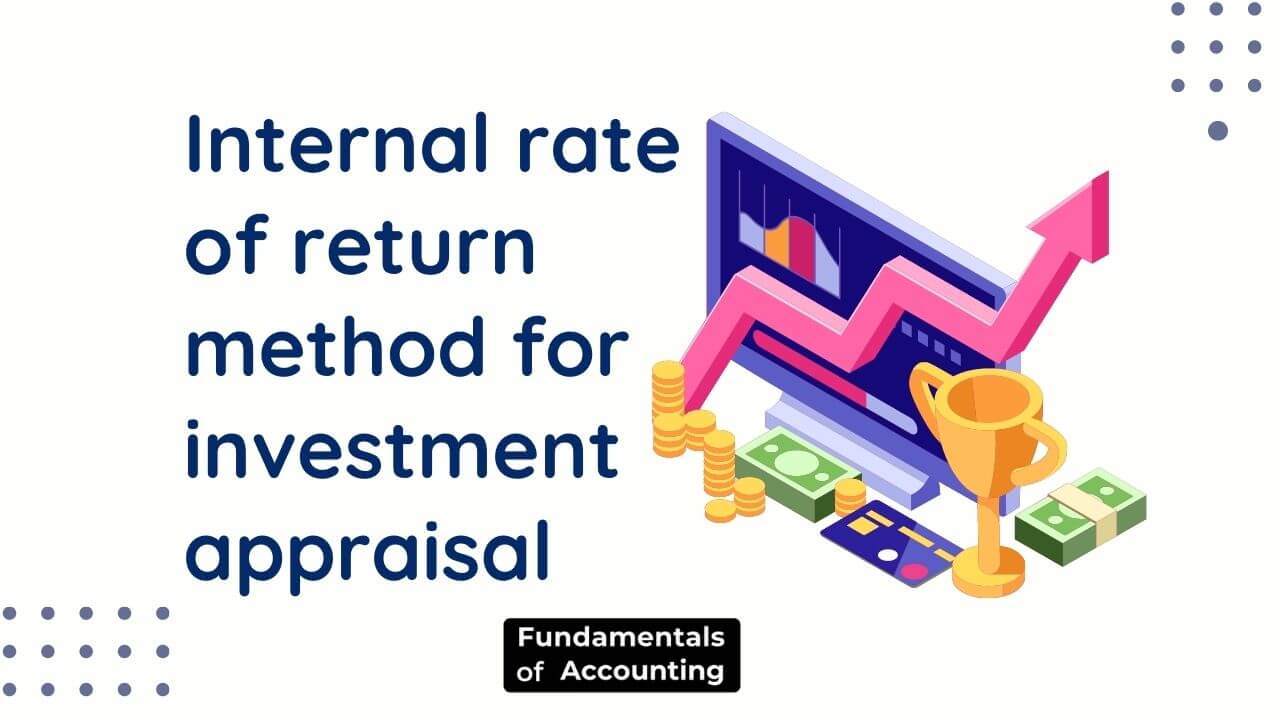Differences between imputed costs and capitalised costs
Among the many categories of costs, imputed costs and capitalized costs are the most confusing. Both play a critical role in assessing and managing expenses, but they serve different purposes and are applied in distinct contexts. This blog will discuss the fundamental differences between imputed costs and capitalised costs, and their impact on business decisions […]
Internal rate of return method for investment appraisal

The Internal Rate of Return (IRR) is one of the most common methods for investment appraisal. IRR is also known as the Internal Capitalization Rate. It is one of the more straightforward methods for valuing an investment and is easily derived from the net present value (NPV) method and discounted cash flow (DCF) models. It […]
Accounting for not-for-profit organisations

A not-for-profit organisation is a business or entity established by individuals to further an end, not-for-profit and charitable. Not-for-profit organisations have one of two primary purposes: to advance the social, economic, or environmental well-being of the people or to bring into existence or to carry out activities that, although benefiting some other end, get greater […]
Ratios that are likely to help the management

Ratio analysis is the process that involves analyzing and interpreting data coming from different financial accounts, such as the balance sheet and profit & loss account. It is comparing one number with another. It interprets financial statements easy to do for the users, including shareholders, investors, creditors, the government, and analysts. Ratio analysis is an […]
What is Activity-Based Costing (ABC)?

Activity-based costing is a method that assigns costs to the different activities involved in making a product to allocate a company’s funds equitably. The ABC approach was first developed by Robert S. Kaplan and David P. Norton, as well as the ABC Research Group at Harvard Business School (HBS), in 1976 and introduced by Kaplan and […]
What is the Meaning of the Ad Valorem?

Ad valorem is a Latin phrase meaning “according to value.” In essence, it is used to describe a tax levied based on the value of the item being taxed. It is commonly used in finance and taxation to refer to a tax or assessment that is based on the value of a particular item or […]
What Are Dependent and Independent Investments?

In evaluating the investment proposals presented to management, it is important to know the possible interrelationships between pairs of investment proposals. A given investment proposal may be economically independent of, or dependent on, another investment proposal. Economically Dependent Investments An investment proposal is economically independent of a second investment if the cash flows (or the […]
Evaluation of Transfer Pricing Policies

Transfer pricing refers to the setting of prices for goods sold between different entities within the same company, often located in different countries. It is the process of determining the price of goods or services exchanged between various divisions or subsidiaries of the same business or organization, frequently spread across international borders. For instance, imagine […]
What is financial reconstruction? Objectives and Impacts

Financial reconstruction refers to the process of revamping or restructuring a company’s financial situation to improve its viability and profitability. This can be necessary when a company faces significant financial difficulties that cannot be resolved through other measures, such as cost-cutting. Financial reconstruction aims to help companies become more financially stable and sustainable by addressing […]
What is Segment Contribution Margin

Segment Contribution Margin In the world of financial markets, segment contribution margin is used as a way to determine the margin that will be required to sell a product. The segment contribution margin is the margin that will be required to sell a product in the segments that are being analysed. The segment contribution margin […]
